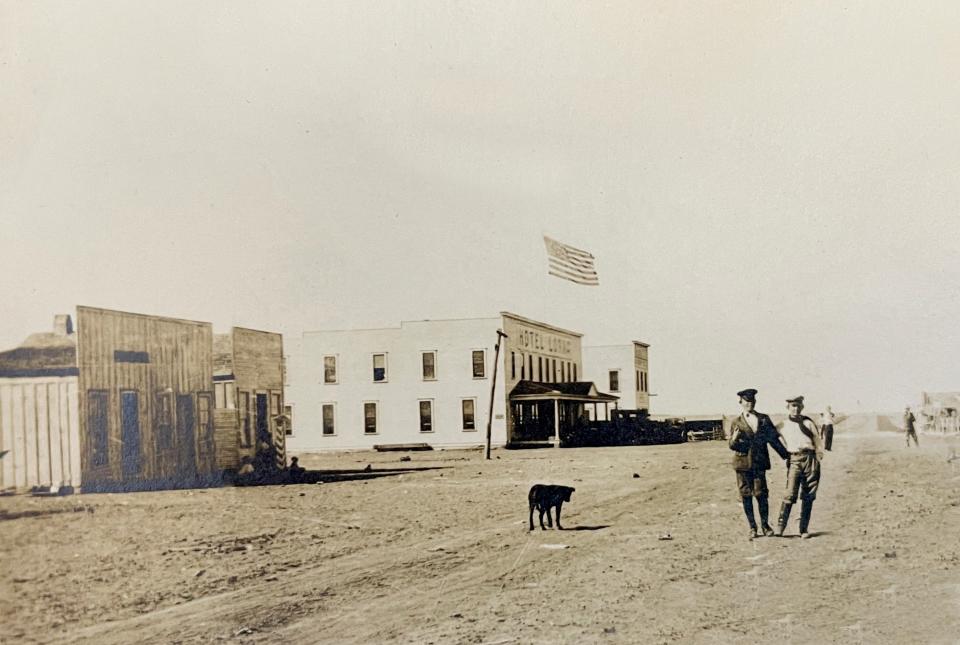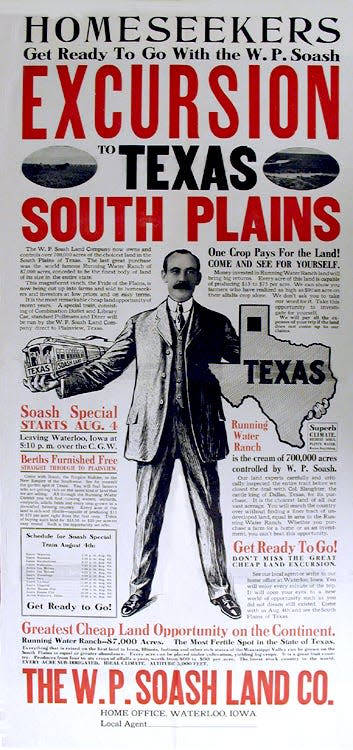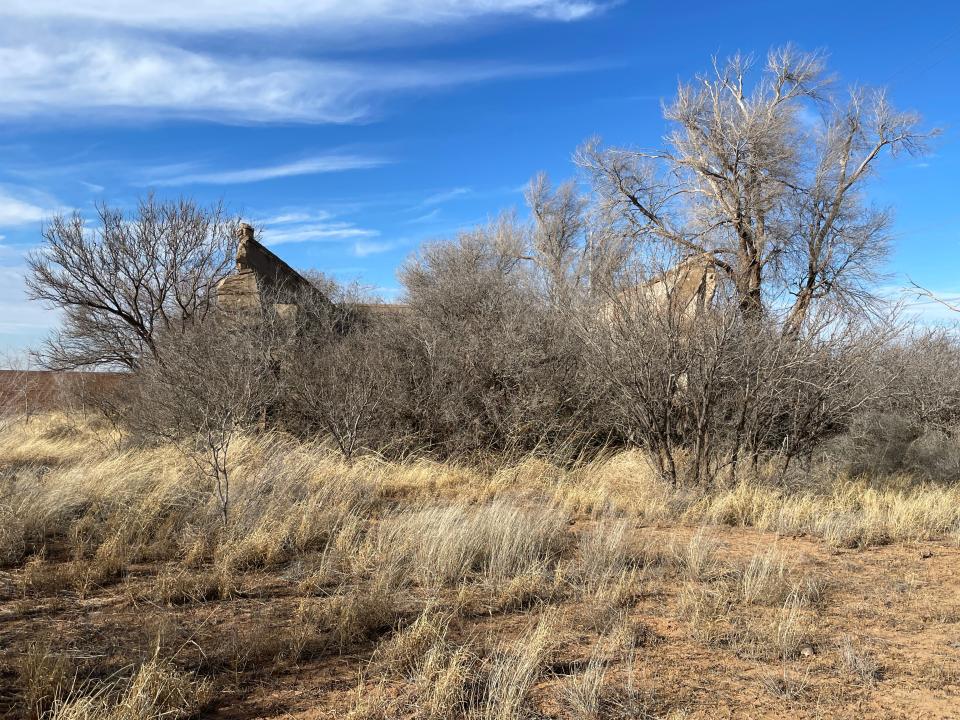Caprock Chronicles: Soash, the 'City of the Plains'
Editor’s note: The Caprock Chronicles are edited by Jack Becker, Librarian Emeritus, TTU Libraries. He can be reached at Jack.becker@ttu.edu. Todays article is by Cindy Martin a frequent contributor to the column.
Texas has 511 ghost towns. One of them, Soash, lies about 20 miles north of Big Spring. The town was named for William Pulver Soash, known as the “Empire Builder” whose land company headquartered in Waterloo, Iowa, had offices in eight states before he set his sights on developing the Texas Panhandle and South Plains.

Beginning in 1906, Soash developed two large sections of former ranch lands and established two towns. The first was a 30,000-acre tract of the XIT lands north of Dalhart where he laid out the town of Ware, now gone. His second was almost 100,000 acres of the Running Water Ranch west of Plainview. Land sales there boomed and Soash developed the town of Olton.
In 1908, Soash undertook his largest enterprise when he secured about 200,000 acres of Christopher Columbus Slaughter’s holdings in Borden, Dawson, Howard and Martin counties – the Long S Ranch, which Soash promoted as the Big Springs Ranch. The terms were complicated and might have scared off someone more cautious, but Soash was confident. The Texas and Pacific Railroad passed through Big Spring and could provide the transportation facilities. 1908 and 1909 were wet years on the Plains and Soash later commented that he had found an oasis.

So Soash moved his family and his offices from Waterloo, Iowa, to Howard County. He hired Robert Lee “Bob” Slaughter to head the Soash Development Company and the two set about establishing the town of Soash, the “City of the Plains.”
The town was laid out in a grid pattern with wide streets, and land was dedicated for religious purposes, a public school, a railroad depot, and green space. Tracts immediately adjacent to the town were reserved for gardening and truck farming and were limited to five, 10, 20, or 40 acres in size. Land farther away from the town was reserved for commercial farming and stock raising. Soash believed that in this way the entire area could be developed as an integrated, organic whole.

Elaborate preparations were made for the development of the town; a two-story concrete office and bank building with a vault, the 40-room Hotel Lorna, a general merchandise store, a drug store, two barber shops, a livery stable, and a garage to house 30 automobiles were completed in the downtown section by June 1909. A two-story school was completed in time for classes that fall. The town was equipped with telephone and Western Union service and an electric system. A waterworks system was planned for 1910.
The first trainload of land prospectors had arrived from Minneapolis in March 1909 and Big Spring citizens greeted them with a band. The Grand Opening in Soash was July 4, 1909. Some 2,500 people flocked to the new town for the celebration. It started off with a traditional 4th of July speech in the morning followed by a riding tournament, a barbecue lunch at noon then a western bronc riding contest and a baseball game which Lamesa won 8 to 7. There was vaudeville entertainment in the early evening and then dancing under the electric lights strung around a platform in the middle of the town’s main street. The town was off to a booming start.
The W. P. Soash Land Company employed 16 carpenters, masons and teamsters, and an electrician. The Hotel Lorna employed 11 workers. Soash Auto Company hired six men and Soash himself employed three farm laborers. The land office itself had more than 275 agents and office employees spread over eight states. By June 1910, the monthly labor bill was almost $6,000.

Unfortunately for Soash, a drought beginning in West Texas in 1909 lasted through 1912, and the Santa Fe Railway did not build to Soash as he had planned. Settlers began leaving and Soash found credit closed to him as loans came due. The company was in good condition, but without new credit Soash was forced to liquidate most of his holdings to satisfy his creditors.
With one or two exceptions the buildings at Soash were moved away over the years. The population dwindled to 50 in 1915 and by 1940 nothing really remained except the concrete shell of the bank.

Soash later did more work in land development in Littlefield, Florida and McAllen before serving as president of the Lone Star Land Company, founded by heirs of C.C. Slaughter. He moved to Lubbock in 1926, and continued his work with the company for a number of years and later established a private practice in real estate and oil and gas leasing. Soash died July 10, 1961, and is buried in the City of Lubbock Cemetery.
Soash colonized perhaps a half million acres and was the first large scale promoter of West Texas. Historian David Gracy summed it up this way: “No man did more than he to bring settlement to the Panhandle-Plains of Texas.”
This article originally appeared on Lubbock Avalanche-Journal: Caprock Chronicles: Soash, the 'City of the Plains'

